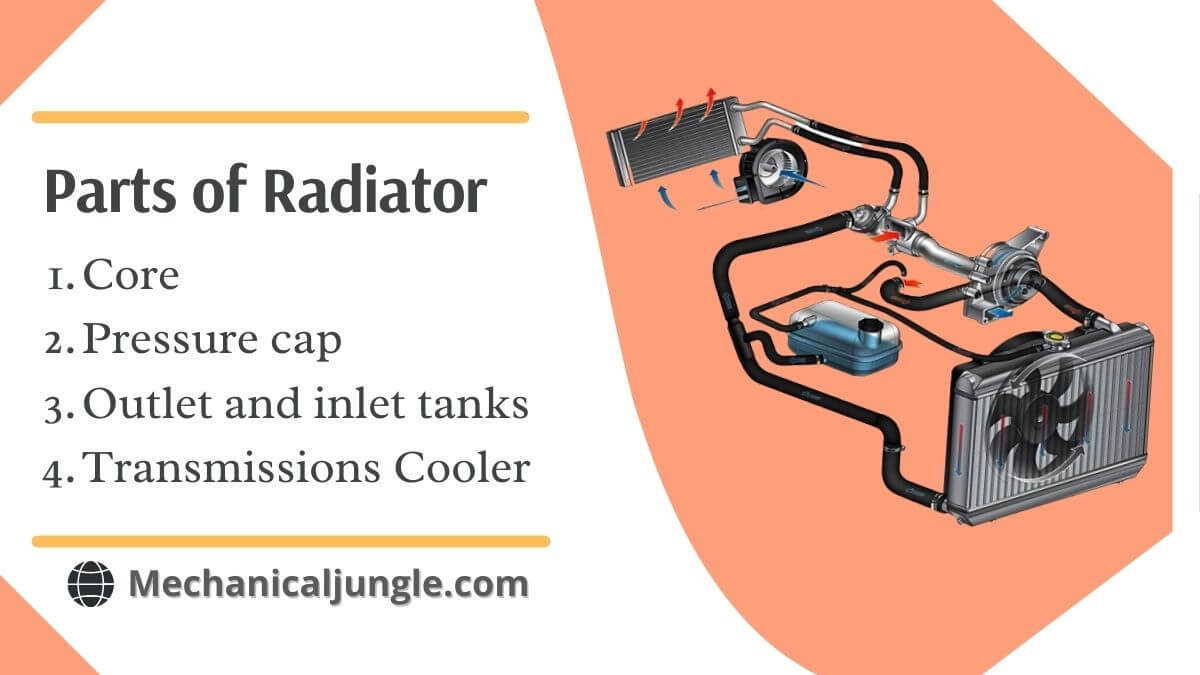
What Are The Parts Of A Radiator Called Reviewmotors.co
1. Radiator Core Tubes Your radiator's core is the part that allows it to fulfill its purpose: providing your coolant with a way to shed its heat into the environment. The radiator core consists of tubes and fins. The coolant tubes run inside the core, while the fins are on the outside.

Learn All About Vehicle Radiator
Parts of the car radiator Coolant liquid The coolant liquid conducts heat away from your car engine, radiator, and transmission. Coolants come in liquid form or gaseous form. Most modern cars use Autozone coolant. Water-cooled engines use water coolants mixed with antifreeze to withstand extreme temperatures.

What Does Radiator Do In Car
Radiator Core Tubes Inlet and Outlet Pipes Cooling Fins Plastic Header Tanks Radiators are one of the most essential parts of vehicles and gen sets. Because vehicles and gen sets produce heat, the role of a radiator is to regulate internal combustion engine temperature and prevent overheating.

Hydronic Cast Iron Radiator Castrads
Radiator Replacement 101: Everything You Need to Know About The Radiator - In The Garage with CarParts.com The radiator is crucial to your vehicle's cooling system. Find out how much a radiator replacement costs and what you need.

How to Choose the Right Car Radiator
The American Radiator Company was established in 1892 by the merger of a number of North American radiator manufacturers. The company expanded in the early 20th century into Europe under the brand National Radiator Company.. In 1929, it amalgamated with the Standard Sanitary Manufacturing Company to form the American Radiator and Standard Sanitary Corporation, which evolved in 1967 into today.
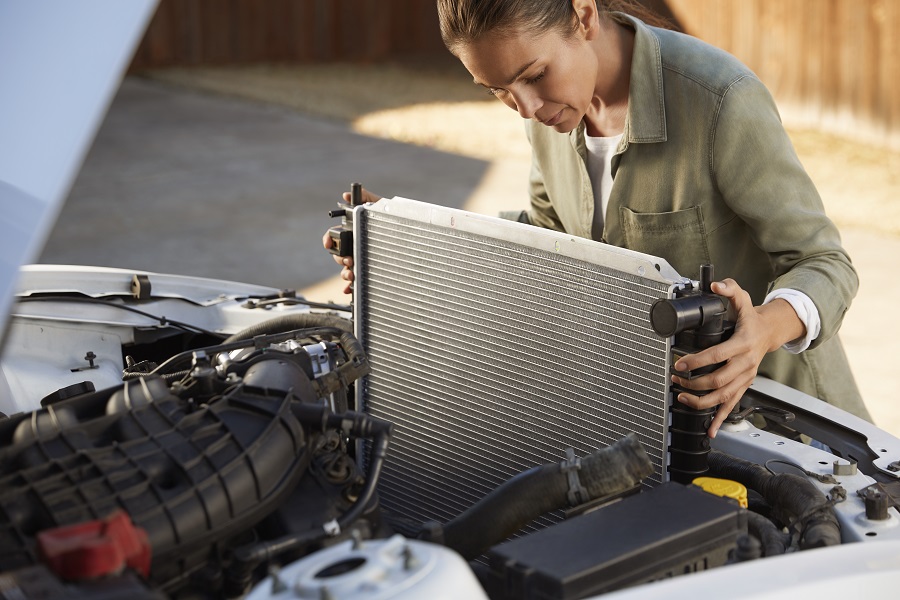
Radiator Replacement Guide How to Replace a Radiator
Radiators are essentially a heat exchanging system. Their main purpose is to transfer thermal energy from medium to medium. They may cool or heat the surroundings, depending on your intended use. Radiators are most commonly used to heat buildings and homes, but you may also find them in cars and electronics.
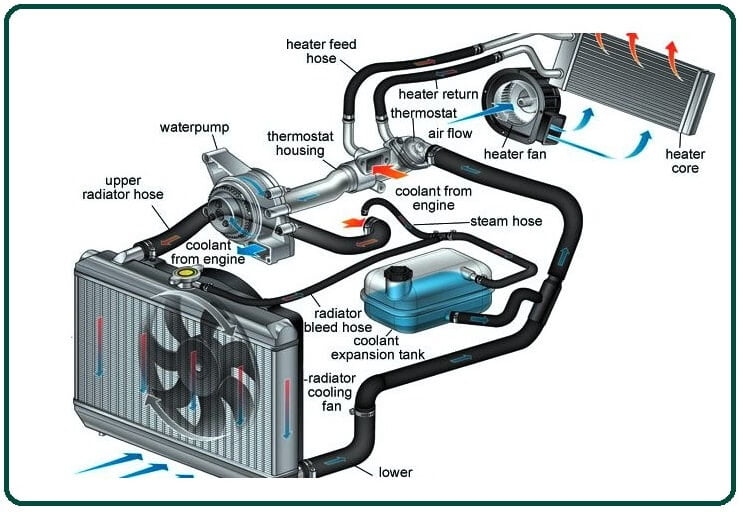
How Does a Radiator Work? Parts of Radiator Coolant In The Radiator
Drain the coolant into a plastic reservoir. 4. Disconnect the Radiator. With the coolant drained, you can start removing hoses, clamps and the radiator bolts keeping the radiator in place. You'll have to disconnect the following parts on most vehicles: • Radiator reservoir hose. • Upper radiator hose.

Radiator and Components
Radiator cores are of different types. There are three cores, two cores, and one core. The radiator heater core number is the thickness of the core's actual surface. You can tell this by looking in the pass side tank via the cap's opening.

Car radiator diagram information gmpbcdallas
Every radiator has these main components: Core: The core is the largest section of the radiator and is where the cooling takes place. This portion is made of metal, usually aluminum. It is easily recognizable from the rows of narrows tubes and fins (teeth-shaped metal pieces) going down or across it.

Radiator Positioning Where's the Best Place to Put Your Radiator?
Two or three pipes emanate from the boiler: the pipe sticking out of the top of the boiler transports steam to the radiators, whereas the one closest to the ground carries the condensed, cool water back into the heating chamber. Sometimes, steam and condensate travel along the same pipe.

How to change a radiator
Radiator. The radiator is one of the most important components of a modern cooling system as it has the task of cooling down the high-temperature water that makes its way out of the engine. It is made up of three parts - an upper tank, a lower tank, and a core. The water first arrives in the upper tank or inlet tank and makes its way.

How do thermostatic radiator valves work Living by HomeServe
When an engine is running, it generates heat. The radiator's job is to keep the engine cool and prevent it from overheating. Coolant is used by a car's engine to absorb heat and send it to the radiator, where it is cooled. The coolant is returned to the engine once it has cooled, and the process begins all over again.
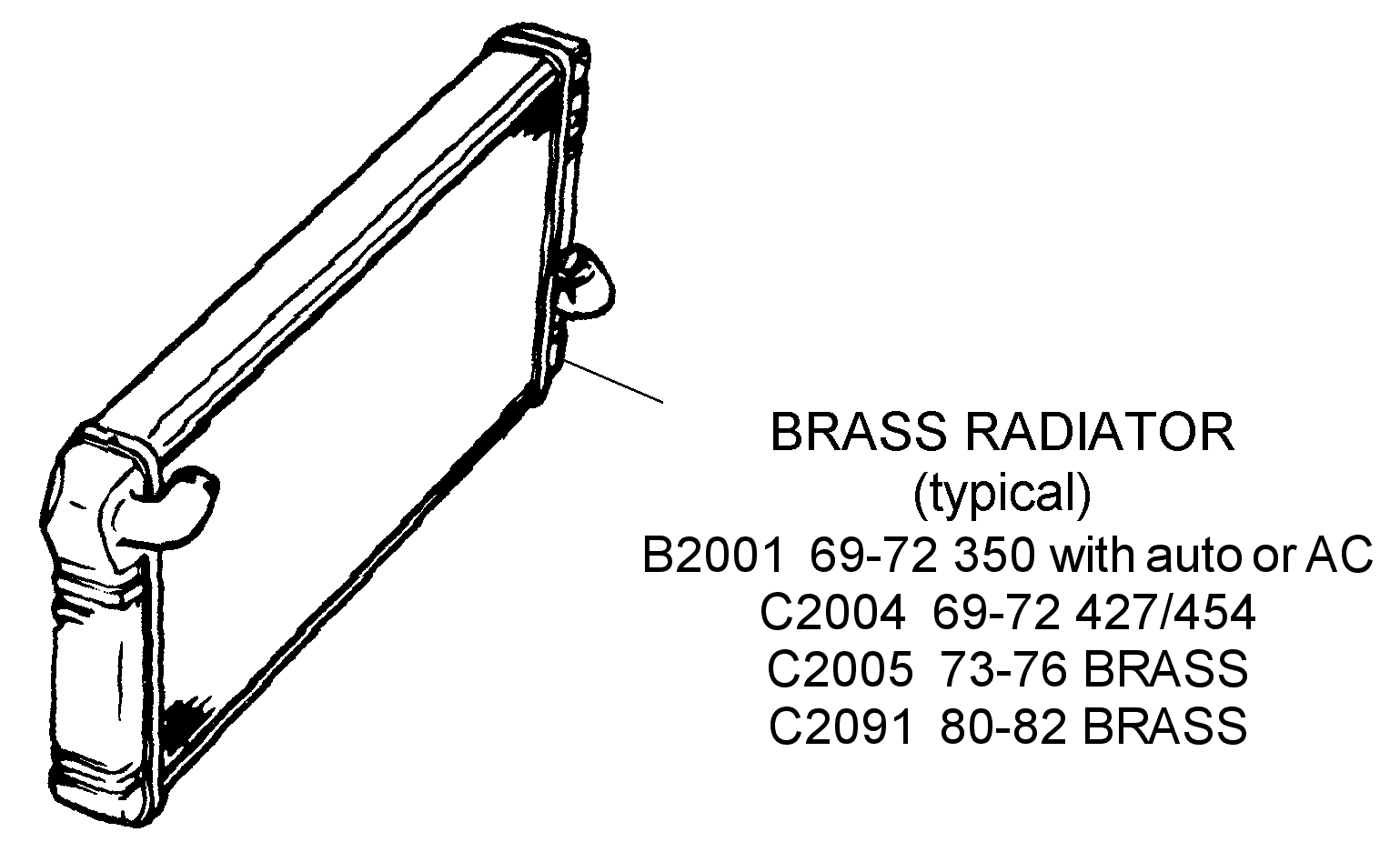
Typical Brass Radiator Diagram View Chicago Corvette Supply
What Are the Parts of a Radiator? By Imani Angulo Updated September 26, 2017 Radiators are thermal exchange devices used in buildings, automobiles and electronics to transfer heat from one area to another. They work by circulating steam or liquid through exposed metal pipes.

Radiator and Components
Components of a Radiator A radiator has three main parts: the core, the pressure cap, and the outlet and inlet tanks. Photo: Christian Wardlaw The core is the main section defined by a large metal block with rows of narrow metal fins.
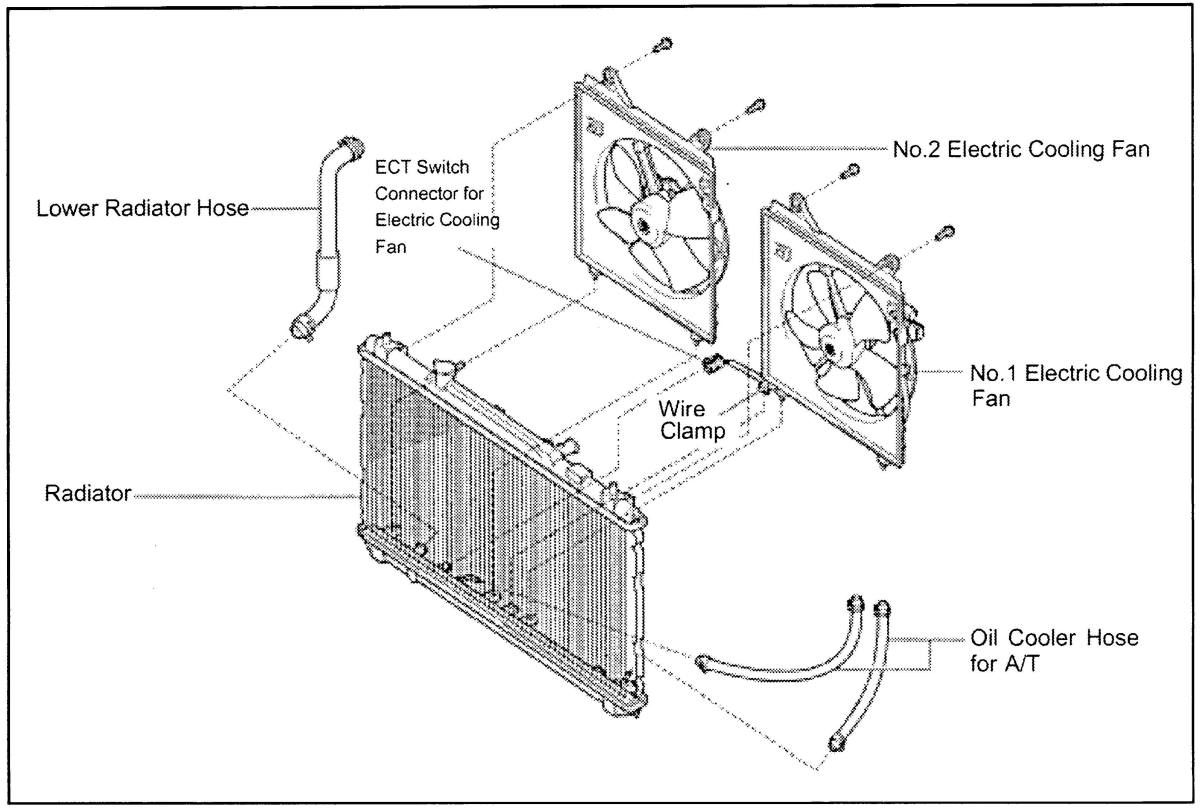
DIY Toyota Camry Radiator Replacement (With Video) AxleAddict
The radiator is typically located at the front of the engine compartment behind the vehicle's grille, where cool air can pass through the radiator, removing heat from the coolant inside. Parts of a Radiator A typical radiator has an inlet tank, an outlet tank, and a center core comprised of tubes encased in fins.

5 Steps to Healthy Steam Radiators
Parts of Radiator: #1. Core the cores are the largest part of the radiator & provide its primary function. It has a large metal section with small metal fins that allow the coolant to expel the air around the radiator (this air is expelled into the grill in front of your car.)